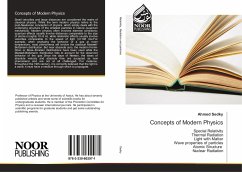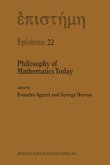Small velocities and large distances are considered the realm of classical physics. While the term modern physics refers to the post-Newtonian conception of physics, which simply deals with the underlying structure of the smallest particles in nature (quantum mechanics). Modern physics often involves extreme conditions; quantum effects usually involve distances comparable to the size of atoms (roughly 10-9 m), while relativistic effects usually involve velocities comparable to the speed of light (3×108 m/s.For example, when analyzing the behavior of a gas at room temperature, most phenomena will involve the classical Maxwell-Boltzmann distribution. But near absolute zero, the modern Fermi-Dirac or Bose-Einstein distributions have been used while the Maxwell-Boltzmann distribution fails to account for the observed behavior of the gas. Since the days of Newton, the ideas of absolute velocity and absolute time are accepted as new phenomena and are not at all challenged. For instance, throughout the 19th century, it is correctly believed that the light is a wave; it must have a medium through which to propagate.
Bitte wählen Sie Ihr Anliegen aus.
Rechnungen
Retourenschein anfordern
Bestellstatus
Storno








